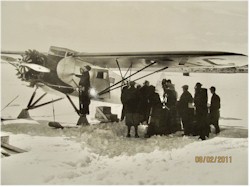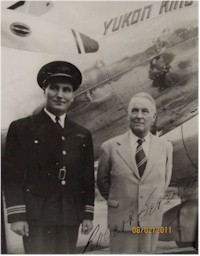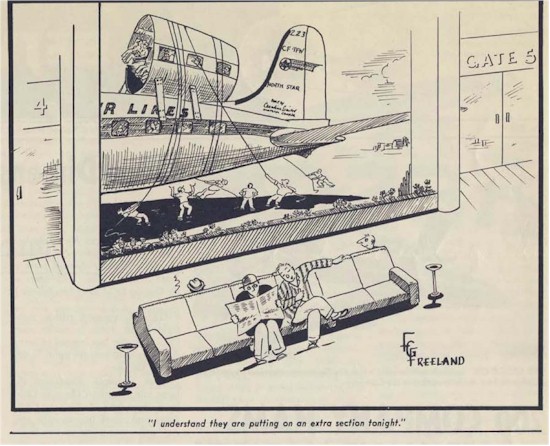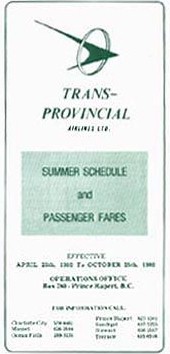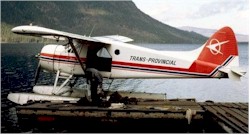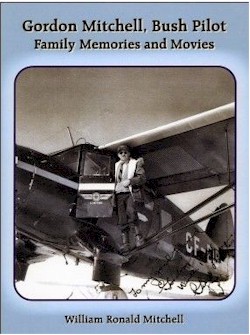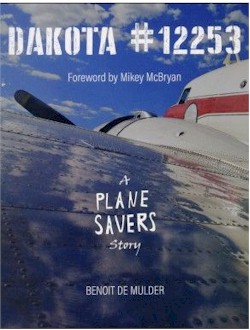|
The memory of the Great Blizzard at Dorval (YUL) in NetLetter #1445 sent in by Marty Vanstone prompted Lorne Paterson to share this memory - Reference the story from Marty Vanstone re that period of the great blizzard, there is a lot more to that story than what the crew recalls. Firstly a little earlier history re the Maintenance crew in YUL. Our boss at the time will go by the initials of DJH which almost all maintenance people of the time will recognize. Nothing was impossible to him. Thus, the reason all this occurred as it did. He decided that we had to have a plow for our new T300 tractor but it could not be just any plow. He had us measure the width of the DC-8 main landing gear and had a plow made that was one foot wider on each side. This plow was enormous and I guess we figured we would never use it. How wrong we were. This plow became our saving grace in many storms, certainly not only this one. Our parking gates were always clear when nobody else could access theirs and many a towing operation occurred because we cleared our own way. In this case that is exactly what we did. The aircraft got onto the gate because the old plow cleared the way. It got to the hangar only because we plowed the way for it to get there. Getting to the runway the only way the aircraft was able to make it was the maintenance fellows cleared a path down the hangar line to allow the aircraft to taxi. In actual fact we had to plow twice the width so that the engines would not swallow all the snow. We actually got a visit later in the day by the DOT crew asking us to stop plowing because they could not move the piles we created. I remember this well as the duty crew, which was the PM shift worked basically round the clock for 2 days before we got sufficient replacement people to allow us to try and get home. DJH showed up in the first morning on a skidoo he had gotten from a long-time friend of the maintenance people in YUL. And I can still remember one of our very best engineers calling into the office. DJH answered the phone and the individual advised that he just could not get to work. He lived a couple of miles from the airport but all the roads were blocked. Being typical DJH the reply was “Can’t you just walk”. The YUL Maintenance crew were an amazing bunch of dedicated workers and I am proud to have been one of them. There are many offshore aircraft recovery stories one could tell. NO, was never a acceptable answer for DJH. When they wanted him to move to YYZ he refused and one day left his company and MOT identification on his desk and disappeared, never to return again to the hangar Lorne Paterson, Editors' note: Pity there is no photo of this monster. |
|
|
Vic Bentley sends us this information -
This ‘mystery’ aircraft is a Fairchild 82. The registration under the wing is CF-AXC. It was registered to the British Yukon Navigation on 28 Sep 1935. The file comments, 'Overran airport boundary in heavy snow Dawson, Yukon YT, 15 -11-36. Rebuilt as CF-AXK' |
|
|
Below is a sister ship, CF-AXL of Canadian Pacific. This is from the files at the Canadian Museum of Flight in Langley, BC. |
|
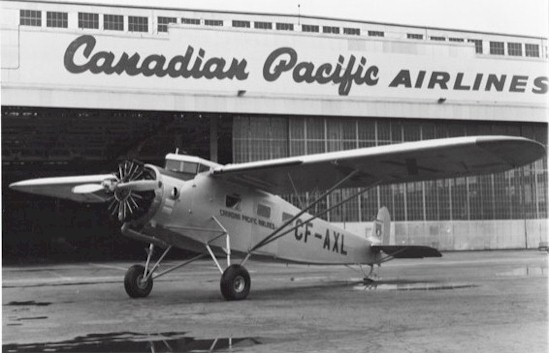 |
|
|
Regarding this photo in NetLetter #1447, Vic asks -
He is shown with the pilot. Who was the pilot? Any historians out there? |
|
|
Mae Wilson, after reading NetLetter #1448, sends this memory - This is a great issue. I read it “cover to cover” and so much interesting stuff. I worked for Nordair Administration in the In-Flight and the Financial Departments until we became part of the ‘new’ Canadian Airlines International. I was there as Supervisor of Office Services (across Eastern Canada) until I retired in 1990. I really enjoy reading the Newsletter. Keep up the good work...and stay safe! Mae Wilson |
|
|
Jack Miles referring to the information from Mike Nash in "Subscriber Feedback" in NetLetter #1448 sends this information - This may be of interest to the readers regarding the "DC-3" weathervane in Whitehorse. Technically, it is not a DC-3, that was the commercial version. CF-CPY was built for the U.S. Army Air Force, as it was then known, and delivered as a military C-47 DL "Skytrain" type on August 28 1942. Canadian Pacific took possession of it on December 11, 1945. I quickly add that I was not there for either of those dates. Regards, Jack M. Miles. Editors' note: Construction number 4665, U.S. Army assigned 41-18540, CPA acquired the aircraft from C.H. Babb Inc., Glendale, California and assigned fin # 275 during April 1946. The aircraft was sold to Connelly-Dawson Airways, Whitehorse on April 28, 1960. Source: Canadian Pacific Air Lines, Its History and Aircraft by D.M. Bain. |
|
A British company envisions a day when a first responder will swoop down out of the sky to render emergency aid and it re-enacted what that might look like recently. Gravity Industries shot a video showing a man in its “jet suit” launching on the mission and landing next to the person in make-believe distress. The demonstration was carried out in cooperation with the U.K.’s Great North Air Ambulance Service and it might be something deployed in its rescue services. “We think this technology could enable our team to reach some patients much quicker than ever before,” GNAAS Director of Services Andy Mawson told TransportUp. “In many cases this would ease the patient’s suffering. In some cases, it would save their lives.” In the drill, the man in the suit launched from beside a road to a woman who was pretending to be a hiker with a leg injury. The jet suit, which includes a backpack with the main thrusters and sleeve-mounted steering jets, propelled the “rescuer” to the woman in 90 seconds. It would have taken about 25 minutes to hike there. The suit uses a total of six micro-jets powered by either jet fuel or diesel. Source: avweb.com/aviation-news |
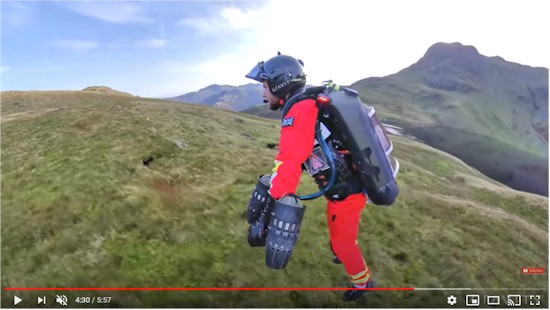 |
|
Organizers par excellence. The 1995 Canadian Women in Aviation Conference was an unqualified success, bringing over 30 aviation enthusiasts together for three-and-a-half days of stimulating conversation and camaraderie. Congratulations to Cathy Fraser, Air Canada First Officer - A320 and Co-Chair; Anna Pangrazi, pilot and Speaker Coordinator, Captain Micky Colton - Military Coordinator and Denise Egglestone, Air Canada Flight Operations Ground Training Instructor - Co-Chair and Treasurer for putting together an extraordinary event. |
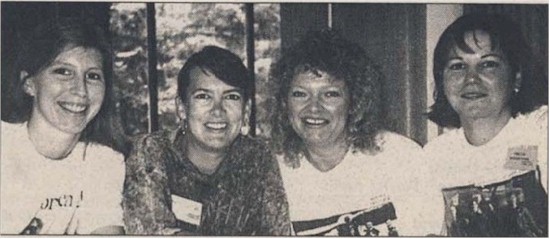 |
|
Pioneering peers. Below, left to right:
Source: Air Canada "Horizons" magazine September 1995 |
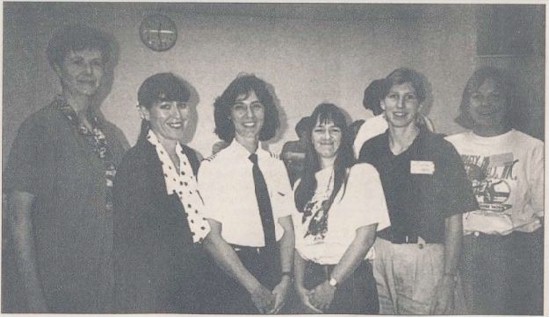 |
|
Women in Aviation International’s 6th Annual Girls in Aviation Day (GIAD) was celebrated virtually September 26, 2020, with the launch of the exciting new Aviation for Girls App, sponsored by the U.S. Air Force. Within the first week, this free, year-round experience for girls ages 8-17 has already connected thousands of participants in 55 countries. Source: www.wai.org/news |
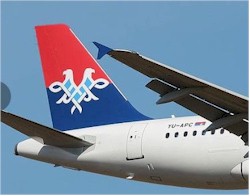 Name this airline – answer below. Name this airline – answer below. |
|
Trans Provincial Airlines, Ltd.: Canada (1964-1994)
|
|
|
|
'A pretty amazing feat': Centenary of first trans-Canada flight celebrated. The trip took multiple flights over 2 weeks to journey from Halifax to Esquimalt, B.C. This week marks 100 years since a group of aviators, many recently returned from serving in the First World War, made a daring first: crossing continental Canada — nearly 5,400 kilometres — by air. The trip from Halifax to Vancouver, undertaken in segments using a series of planes at designated stops across the country, was originally supposed to take 48 hours, but the weather and aircraft troubles got in the way, explained John Orr, a retired colonel with the Canadian Armed Forces and a historian with the Shearwater Aviation Museum in Nova Scotia. The first leg of the journey, from Halifax to Saint John — via seaplane — almost ended in disaster. "It had been very rough over the Bay of Fundy. And the engine cowling ripped off, sheared off an engine-driven fuel pump, covered the pilot in fuel. He did a forced landing in the Saint John River," he said. Crews secured another aircraft, refueling in Fredericton, and eventually landing on the St. Lawrence River "in the midst of a howling gale." The crews switched to land-planes, and the trip from Calgary into Vancouver was another major challenge, said Orr, not just because of the raging snowstorm, but the geography. "We have to remember that in those days, you didn't fly over the mountains. You flew through the mountains," he said. "So they had to navigate that. And that was really, really challenging." Eventually, on Oct. 21, 1920, with a last-minute extension to Esquimalt, B.C., crews completed their trans-continental journey. Source: www.cbc.ca/news |
|
Australian airline Qantas conducted a seven-hour sightseeing flight in a 787 Dreamliner the weekend of October 10, 2020 operating out of Sydney Airport (SYD). According to the airline, the Great Southern Land scenic flight was aimed at frequent fliers who “wanted an opportunity to enjoy some of the airline’s Spirit of Australia hospitality even if they couldn’t travel as they normally do” due to the coronavirus (COVID-19) pandemic. The trip included low-level flybys of locations such as the Great Barrier Reef, Uluru, Kata Tjuta, Byron Bay and Sydney Harbour. Qantas previously stated that the 150 seats offered on the flight sold out in ten minutes. Ticket prices ranged from AU$787 (US$564) a seat for economy to AU$3,787 (US$2,714) for business class. It has been reported that the airline is considering offering similar flights in the future. |
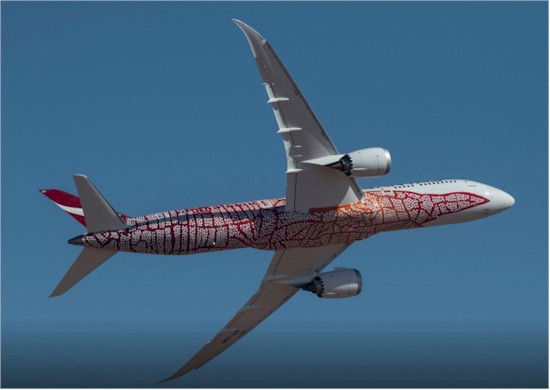 |
|
Larry Milberry canavbooks.wordpress.com has these reading suggestions - This delightful new book has several special features: it adds importantly to the Austin Airways story, it’s a model for combining aviation history with family legacy, it comes with many new archival bush flying photos + has a DVD with rare, old-time bush flying movies. A real gem of a package, especially if you have our Austin Airways, Norseman or Air Transport in Canada books.
|
|
Dakota #12253
A huge treat for any aviation bibliophile! Covers this Dak’s wartime role with 271 Sqn as FZ668, its harrowing D-Day and subsequent Normandy operations. In-depth history with magnificent photo coverage. Then, post-war “ops” until FZ668 lands at Cartierville to be converted by Canadair for Trans-Canada Air Lines (TCA) – you know this story from various CANAV books. Its TCA years as CF-TER, then 12253 goes to the DOT for years of valuable service as CF-DTD. It finally retires in 1993, then sits forlornly for decades at St. Hubert until rescued by the Buffalo Airways “Plane Savers” & returned to flight status in 2019. All the details of how this “miracle” was performed, great credit is given to the dedicated restoration team. You’ll be fascinated at this process that almost defies possibility. |

